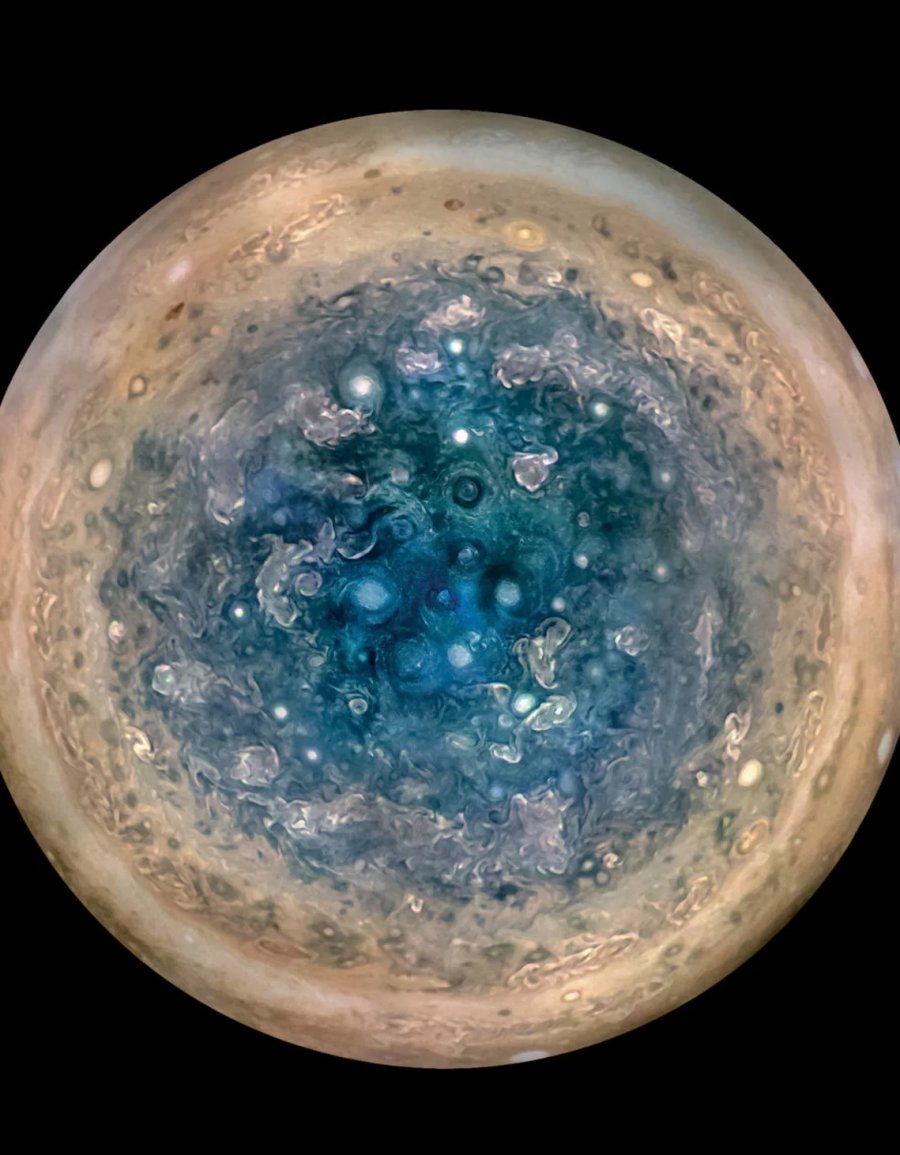Juno Probe Presents Surprising Data About Jupiter And Reveals Some Of Its Secrets
Ten months ago (on July 4, 2016), NASA’s Juno probe entered Jupiter’s orbit and flew within about 2,600 miles (4,200 kilometers) of Jupiter’s swirling cloud tops on Aug. 27.
Now, Juno delivers the first portion of interesting results about our giant gaseous planet.

Among several surprising scientific data revealed by the probe’s imager, JunoCam, there is one regarding gigantic Earth-sized swirling storms that are densely clustered and concentrated in the Jupiter’s poles.
Another surprise comes from Juno’s Microwave Radiometer (MWR), which samples the thermal microwave radiation from Jupiter’s atmosphere, from the top of the ammonia clouds to deep within its atmosphere.
The MWR data indicates that Jupiter’s iconic belts and zones are mysterious, with the belt near the equator penetrating all the way down, while the belts and zones at other latitudes seem to evolve to other structures
Measurements of the massive planet’s magnetosphere, from Juno’s magnetometer investigation (MAG), indicate that Jupiter’s magnetic field is even stronger than models expected, and more irregular in shape.
MAG data indicates the magnetic field greatly exceeded expectations at 7.766 Gauss, about 10 times stronger than the strongest magnetic field found on Earth.
The next flyby is on July 11 and it’ll focus on Jupiter’s Great Red Spot.
The new findings are being published this week in two papers in the journal Science, as well as 44 papers in Geophysical Research Letters.



 Creators of mankind
Creators of mankind Description of “Tall white aliens”
Description of “Tall white aliens” Where they came from?
Where they came from? About hostile civilizations
About hostile civilizations The war for the Earth
The war for the Earth “Tall white aliens” about eternal life
“Tall white aliens” about eternal life Video: “Nordic aliens”
Video: “Nordic aliens” Aliens
Aliens Alien encounters
Alien encounters The aliens base
The aliens base UFO
UFO Technology UFO
Technology UFO Underground civilization
Underground civilization Ancient alien artifacts
Ancient alien artifacts Military and UFO
Military and UFO Mysteries and hypotheses
Mysteries and hypotheses Scientific facts
Scientific facts


















